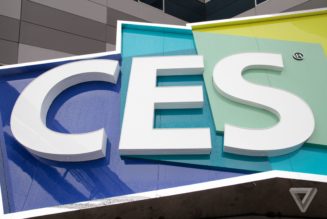Can Wordle, The Athletic, and NYT Cooking bring the Times bundle to all of America?
Share this story

Meredith Kopit Levien is the CEO of The New York Times, which is perhaps the most famous journalism organization in the world and certainly one of America’s most complicated companies.
The Times is 172 years old and has only recently become a force on the internet. It’s hard to remember, but back in 2014 and ’15, people thought the Times was doomed — that it would be replaced by BuzzFeed and Vice and Vox. Instead, the company has undergone a radical and sometimes painful public transformation and emerged as something closer to Netflix or Spotify — a subscription business with a huge investment in product and engineering.
Meredith has led a lot of that change, and in particular, she’s led the charge in turning a Times subscription into much more than paying for news — NYT Cooking and Games are hit apps, and of course, she bought Wordle last year in a bit of a coup.
We talked about that structure, how Meredith intends to appeal to a broader audience with all of those products when the country is basically divided in half politically (and one half doesn’t care for the Times at all), and about platforms and growth. And like all media organizations, the Times has a complex relationship with Google, so we talked about that, too.
Meredith Kopit Levien is the CEO of The New York Times. Welcome to Decoder.
Thanks so much for having me. It’s great to be here.
Yeah. I’m really excited to talk to you. It feels like there’s a lot to talk about. You’ve joined us as part of our Centennial Series, where we’re talking to the CEOs of companies that are over 100 years old.
I love that you’re doing that.
There’s a lot of drama inside a company that has made it to 100 years, so the shows are pre-baked for us. We just have to go find it. The New York Times is older than that; it’s 172 years old. It is one of America’s — one of the world’s —most storied news institutions. You are a reasonably new CEO in the story of The New York Times. Tell me how you came to be the CEO and what it was like to join a company of this age.
When I came to the Times almost 10 years ago, so I joined in 2013 as head of advertising, everybody at the time used the word “legacy” in front of the word “media” and implied a negative thing. I used to think, “But legacy is such a good word. Everyone wants a legacy. Shouldn’t a company want a legacy?” I loved when people would say, “It’s a heritage media company,” because that sounds better. Legacy is an awesome word.
It does sound better.
It’s great to have a legacy. The legacy of this place is the highest-quality journalism globally at scale that there can be, and it’s continuing to raise the bar for what that is across topics and formats and the number of people we can attract.
The first thing to say is that’s why I came, because I love the mission of what The New York Times does. That’s why I’m still here almost a decade later. My journey to CEO was just getting to do more and more on the business side of The New York Times to support this incredible mission of bringing understanding and truth to the world at scale, and to see that there’s a sustainable model for continuing to do that and it can be a great business.
So you joined from Forbes in 2013, which had also gone under a pretty substantial digital reboot. They built the contributor network, and they attracted scale in a different way. That’s one story. Since then, in the last 10 years, you’ve been the chief revenue officer, the chief operations officer, and then you became the CEO in 2020.
That’s a pretty intensive view into the structure of the company. One of the theses of this show is that the structure of a company will tell you an awful lot about the company itself, and that what the CEO of a company really does is mess around with the org chart to get the goals they want at the end. The Times is a really weird company, because it’s a public company and there is a family that owns the majority of it. You’re the CEO, and there’s a newsroom that is very precious, as all newsrooms should be — my newsroom is very precious. How is the company structured right now?
Those are all super fun and interesting questions. You used the word “weird” for our structure. I think I would say it’s pretty unique and special. I’d give it a little bit more of a positive judgment.
I like how we’re going from legacy to heritage and weird to special. That’s pretty good.
Listen to Decoder, a show hosted by The Verge’s Nilay Patel about big ideas — and other problems. Subscribe here!
It’s good to have a legacy and good to be unique. Listen, I’ll give you two levels of structure. The one I think you’re poking at, I’ll proudly say, is there are 5,800 people at The New York Times. There’s somewhere along the lines of a couple thousand people in the newsroom for the core report, and they don’t work for me. They work for an executive editor, who works for a chairman and publisher, and I also work for that chairman and publisher. That structure has been around for a very, very long time, and it is there to protect the quality and independence of the journalism.
I have often said that I think there’s a story that doesn’t get told enough about The New York Times and its digital transformation and its current ability to build a larger and hopefully increasingly successful business. That structure was part of the framework for our ability to keep investing in journalism and to keep investing in the newsroom, even in very dark times when many other media companies were not doing that. It’s a structure that serves us incredibly well, and I suspect it will be that way for a very long time.
It’s kind of a privilege and a pleasure to be the CEO of a company that is first and foremost committed to quality, independence, durability, and excellence of its product. That’s ultimately what every CEO has to do, and the company I work for has an extra backstop to that. It says, “Above everything, including our own commercial interest, we’re going to protect the quality of the product.”
So 5,800 people total. How many thousands of people are in the newsroom?
There’s somewhere in the neighborhood of a couple thousand in what we would call the newsroom of news and opinion journalism, the core report. In addition to that, we acquired The Athletic 13 or 14 months ago, which has somewhere close to 500 sports journalists covering major teams and leagues in the United States and European football. Then obviously, we have a games app, so we have game makers. They’re not journalists.
Is the games team in the newsroom?
No. The games team is not in the newsroom. The Athletic is separate from the newsroom. With Wirecutter, we have a large staff of really amazing folks doing editorial work on product reviews, which we think we do better than anybody else and are quite excited about. Then you have lots and lots of people making recipes for our cooking app and writing about food.
Yeah. I mean, that’s the split that I’m really interested in. There’s the newsroom in that part of the structure — the heritage structure, as you might call it — and everyone kind of understands it, and then there’s an executive editor. The newsroom’s really protected. You have a few thousand other people that are distributed amongst things like Wirecutter, The Athletic, games, and crosswords. There’s another chunk, right? There’s sales, product, and all that other stuff.
There’s a whole bunch of business people included.
To keep it going, right?
How is that stuff organized, and have you changed it?
Yeah, great question. The first thing to say is that we’re public. We’re a controlled public company, and as such, we actually report in two segments — The New York Times group, which is everything except The Athletic, and then we report The Athletic separately. The Athletic is sort of its own entity, but it’s very connected, obviously, to the mothership, and it’s part of our bundle, which I hope we’ll get a chance to talk about. But The Athletic is separate. Wirecutter is kind of run as its own thing. It’s not reported as a separate segment, but it has a different business model. Largely, it’s an affiliate business.
Then we have three other what I would call business side groups. There is a fairly large cross-functional digital product development organization, which is made up probably in order of the number of people, of engineers, who work on the software through which people find and experience our journalism and our recipes and our games and our product reviews and so forth. That’s a pretty big team, we call it X-Fun. It’s the cross-functional digital product development organization.
We have a marketing organization. The Times, over the last half dozen years, has come to take its brand sort of even more seriously as a propellant to growth, so we have a pretty sizable marketing organization that helps people understand where the brand sits in people’s lives and what it means.
We have an advertising organization. We’re super proud of the ad business we’ve built. We intend for that business, over the medium and long term, digitally, to be a growth driver for the company, and we have a probably 350 to 400-person ad team that’s a full-stack team. Everybody says sales, I always say that a quarter of those people are in sales, maybe a third, but we have many makers and creative people. We have a really world-class creative studio that’s part of our ad organization. Then we have the corporate functions, which are sort of considered on the business side, but obviously, support the whole of the organization. Finance, HR, legal, comms, and so forth.
Before I was CEO, I was as COO for three-and-some-change years, and my job there was really about getting the digital center of the company to operate in the most effective way. Going back to your word “legacy,” it was about taking the structure of a legacy company that had these silos. You had a marketing team, an engineering team, a product team, and a subscription sales team. Five or six years ago, a lot of the work that I, and the team of leaders around me, worked on was to say, “How do we actually transform this organization for the business that we are, which is a fast-growing, direct-to-consumer scaling digital business with a giant product development engine of growth?”
Most of that growth in New York Times subscriptions comes from people landing on our site, and going through the journey of engagement as a customer. That’s how most of them sign up. Five to six years ago, I’d say we did a pretty radical reorganization of the digital center of the company to function more like what you see in the fast-scaling tech world, which is cross-functional teams made up of lots and lots of disciplines, who work together on objectives as opposed to a top-down planning organization.
That model looks like a lot of direct-to-consumer companies. You go and acquire a customer on a platform like Google or Facebook, or God help us, Twitter, and they land on The New York Times. Maybe they get through the paywall the first time. Maybe the second time you ask them, “Hey, do you want to pay for this now? You clearly like it, you’ve come back a few times.” Is that what you’re talking about? Do you recognize, “Ok there’s a funnel there? We have platforms that are at the top of the funnel, and we need to get people to convert at the bottom”?
That’s in the zone of what I’m talking about. Maybe I’ll step back and say it in a slightly different way but with a very similar meaning. Fifty to 100 million people come to The New York Times, on average, on a weekly basis. We have 9.6 million subscribers, so many, many people who come are prospective subscribers.
To your point, they land there from Google search, a social media platform, or a friend sent them an email of a story or a WhatsApp message, or any number of ways. Once they land there, the most likely thing to get them to subscribe is our ability, through the combination of software and journalism, to make them engaged in the next thing that might interest them — or to just get them to understand what they can get as a subscriber versus what’s available to someone who just landed here.
The vast majority of our subscribers come from the work we do combining software with journalism, recipes, games, sports journalism, or product reviews. They come from people landing on The New York Times, and we take them through a journey that compels them to subscribe — or we’re at least able to find the next thing that makes them want to engage.
When you wake up in the morning, what are the metrics you look at to see if that’s working? Obviously, it sounds like subscription starts as one. Are there other metrics along the journey that you track?
The single most important thing to the place is asking how many of those 50 to 100 million people that come on average every week can we get to engage repeatedly. That is true for both subscribers and prospective subscribers. If there’s one thing that we are more obsessed with commercially than anything else, it’s, “Can we be interesting and compelling enough to get you to come more times per day or week, and can we get you to read, watch, or listen to the next thing?”
Of late, a lot of our focus is on if you come, let’s say you go to Google search and type in “Wordle” — I think Wordle was the most Google-searched term last year, so a lot of people did that — and then land on our Wordle page. If you play Wordle, can we get you to play the next game? Maybe it’s Spelling Bee. You play it and you realize, “Oh, this is a subscriber product.” Can we compel you to buy a subscription to that?
Maybe when you play Wordle you see on that page that there’s an incredible story about what happened in banking this week, and so you go read that. A lot of our work is to get you to come in for one thing, and then show you that there is an enormous amount of value there across other news and the things we do in the core news report, which is well beyond news, recipes, shopping advice, games, and sports journalism. How do we get you to know there’s all this other stuff there? How do we interest you to stay and do more or to come back again and do more?If I were to say where the most work on the business side of the enterprise is going, it’s that.
Just to contrast that from something you asked me before, six or seven years ago, I would’ve said we were much more focused on the straightforwardly commercial things. What is the price of our subscription? How much do we discount it on promotion? We still do that, and we’re still thinking about that. But the majority of the effort goes into how we can get you to engage.
That is very different. What you’re describing is the Times as a platform unto itself.
It’s a destination. That’s the word I would use. It’s a destination that a lot of people come to, and we have to use their experience at that destination in a really purposeful way to make it really compelling for them to stay longer, ultimately pay, then pay more over time because they’re getting more value out of it.
Yeah. One of the tropes on the show is that your distribution inevitably describes what you make. I always bring up YouTube as an example of this, because the nature of YouTube as a platform has created the YouTuber and the YouTube video. Everybody listening to this probably has a different conception of what those words mean, but they’re more similar than different. How do you think about your relation to those first-order distribution platforms? That would be to Google, to Facebook, to YouTube, to all of those platforms. It feels like, for text journalism in particular, that the last great distributor is Google, and Google is going through some chaos and an identity crisis of its own. Everything else is a short-form video. Do you think about that as a challenge you have to solve, or are we still going to optimize for Google and just see what comes next?
That’s a great question. I think my first answer is that for more than a half a dozen years, we have asserted that the Times has to be a destination, something people go to directly, ask for by name, and choose to have a direct relationship with. That, like being subscription first, has been a really important principle of our business.
We’re also keenly aware that we live and operate in an ecosystem that, to your point, is quite dynamic, and often due to things that are entirely out of our control. A lot of our work is about, once you drop there from Google, Facebook, Twitter, or any number of other places…
Yeah, but do you think about SEO? I’m talking about the very top of the funnel. Are you worried that, “Okay, we have an SEO operation,” — every newsroom does — “and we’re winning the search terms on this stuff. We’re getting people in here. This is the part we can control, but the part we don’t control seems (a) not long for this world as people go to video, and there’s no other social network or big distributor platform that’s sending people to text, and (b) the value of those customers is almost always one-and-done.” You search for something, you land on the page, and maybe you’ll get some huge percentage of them that stay and also come back to the Times — but a lot of them are going off to search for the next answer, the next recipe, or whatever.
These are all the right questions. I would say we are keenly aware that we’re operating in an ecosystem where the dynamics of our subscription funnel is not entirely controlled by us. What you’re poking at is something we’ve talked about a lot as of late, which is that there are three things going on in the ecosystem. One, we have felt that the platforms are generally pointing to news less. When Facebook closed the news tab, when they shuttered it, they pretty overtly said, “We are going to send less traffic to news.” I would say that is broadly a de-emphasis on news or a particular kind of news. We feel that.
Two, which is something that you’re poking at and that I think is a real force we feel, is the broad platform ecosystem pointing more to video. I want to say that the Times is not a linear television company, because video wasn’t what we did for a living. The report itself on The New York Times is now incredibly multimedia, and it’s successful in that way. I mean, I don’t have to tell you that. I think we’ve done a really good job of showing people things in addition to writing them in text, to your point. We’ve obviously put a lot of effort into visual journalism. We’ve also put an enormous amount of effort into audio journalism. It does in fact feel like the ecosystem is pointing a lot more to video. That is certainly something we think about.
If I were to step back, I would say that in the close to a decade that I’ve been here, the ecosystem has changed a number of times. Our job is, one, to obsessively focus on getting people to come to our destination and build a direct relationship with us, to register with us, to give us their email address, and to let us show up in their inbox. We have something like 15 million people who get an email from The New York Times. The number of people who read The Morning, which is our awesome morning newsletter, is like 5 or 6 million people. I don’t mean those who are signed up for it; I mean those that read it every day. So, to me, that’s a destination experience. You’ve invited us into your inbox and you open it every day.
We are obsessively focused on that, and when I talk about the product itself doing a lot of the work to drive subscriptions — which I described to you before — it’s to get more people to come to us directly, ask for us by name, have us on the home screen of their phone, download our app, or make a direct relationship with us. That’s part of it.
The other part of it is that when the ecosystem changes in ways that make sense for what our mission is, we have a good track record of making sure we evolve in a way that helps continue to make that prospect funnel rich. I would agree with you that it’s a moment of pressure from the platforms in the ecosystem, and I also have a lot of confidence that the Times, like other journalism organizations, has made its way through those moments of pressure before.
If I said Google is going away, so now it’s a zero for everybody, what would your next move be?
Do you really believe that?
I’ve lived through Yahoo going away; I’ve lived through Facebook going away; I’ve lived through a very strange moment of Snapchat going away. I feel like we would be making a mistake if we didn’t envision what it would look like if Google went away. I don’t think it’s going away tomorrow, but I do worry that every media executive that I’ve ever spoken to is deeply aware of how much Google drives the top of the funnel, how much the entire architecture of the internet is organized around Google’s wants and needs, and how little self-awareness there is about this being critical dependency instead of a benign relationship.
I would agree with the premise that Google plays a really big role in the ecosystem, but I would also just point back to the comment I made earlier. For something like six or seven years now, we’ve been obsessively focused on getting more people to ask for us by name and come to our destination.
So you are hedging.
I don’t know that I would call it hedging. I would say we have a really principled view of news in particular, but also in all the spaces we play in beyond news, like games, shopping, advice, recipes, sports journalism. News in particular is a relationship business. You should have a direct relationship with a provider who you trust and who you believe is going to make good use of your limited time.
The internet has brought us so much, but it has also gotten harder and harder to find things that are great and worthy. We are obsessed with making sure that it is well-understood how great the journalism, the recipes, and the shopping advice all are in The New York Times. We’re a marketer, we’re out in the world; we make TV commercials. We are constantly trying to help people understand the breadth and quality of what the Times does, so that however the ecosystem may change, we’re prepared for it.
I would agree with you that every content business I know is subject to an ecosystem they don’t control. Making direct relationships, getting people to download your app, or getting people to be able to do other things from your destinations that drive your business is the game.
I just interviewed the CEO of iHeart Digital, and he kept telling the audience to download his app. I feel that is the answer: have a direct relationship.
Download The New York Times app if you haven’t already. Please download it. And Cooking. And The Athletic and Games.
We’re going to do a supercut of CEOs telling people to download their app on this show.
I want to talk about the product side of it for a second. When I talk to the tech CEOs, they are laser-focused on the product, the margins of their product, the next set of features that the product could enable, and in particular, platform shifts. There’s a lot of talk right now about AI maybe being a platform shift, or maybe the metaverse is a platform shift.
You run a product organization. The one theme that comes out from all these conversations is that once you start investing in software, that cost just starts ballooning. My favorite example of this is when we had the chief technical officer of John Deere, the tractor company, on the show. They employ more software engineers than hardware engineers now.
That is awesome. I would have never known that. That’s so great.
It’s because the software investment is exponential. Is that something you’re experiencing too? Okay, so you have a big product team and you are a destination. That means the destination has to be as good as the Facebook app, the Instagram app, or the TikTok app; it has to compete at that level. Then you have to deliver journalism. Then you have this other thing that’s happening inside of it, where you want people to sign up. Then you have the Apple ecosystem and all this other stuff to contend with. Is your software investment growing at the same pace that you would expect, given how the tech companies grow their software investments?
The single largest investment at The New York Times is in the journalism, period. The first dollar in the place goes to the journalism, period. We will rise and fall. We will rise on the quality, the independence, and the breadth of our journalism, and we will fall if at any point that is compromised in a major way.
Just to go back to the earlier conversation that got the Times to where it is today, is thanks to the control structure. We kept investing in the journalism, even in really dark times. Right? We kept investing in the journalism. I’ve been here almost a decade, and the thing I’m most proud of is the newsroom today. Even set aside The Athletic, the recipes, the shopping advice, and the games, the newsroom today has people on the front lines covering the world, all over the world, in many more formats today than we ever had before. Take all the other stuff out of it, and that is a substantially larger operation today than it was when I got there. That is the place where the most money is going to go at The New York Times.
In terms of software investment, that has been a huge area of focus. We’ve said for half a dozen years now that we’re going to invest in the journalism, we’re going to invest in the digital product development that helps people find and experience that journalism and the other stuff we do. And we’re going to invest in marketing, so that people understand why the Times is different, worth paying for, and relevant to them.
What is changing is that we have been investing in the first two for years now, meaning in the journalism and the digital product development. Stop me here if I get too technical. But because the vast majority of our subscribers come not through paid marketing, but through that engine, which is a combination of the journalism and the software that makes people find and experience it and want more of it. As that gets better, you can invest less in the marketing. I would say this is maybe where we veer from a tech company. We’re a journalism company. Our journalism has to be extraordinary. It has to have great breadth. We have to keep innovating in the formats.
We are pretty well-placed. I mean, I’m not going to tell you we’re not going to keep investing in digital product development. But, ultimately, you get to a point where you get leverage out of that investment — which is a financial term — and you’re getting more people to come into that product. One of the things we’ve told investors is that we are beginning to spend less money on marketing because the tech is working well enough that we can spend less money on marketing.
I’m going to make one more economic point, and I’ll contrast us to maybe some of the other tech companies you talk to. Go back to that thing I said to you before about 50 to 100 million people coming to The New York Times every week. The vast majority of them are not already subscribers, so we are already generating our own audience. The majority of our subscription starts do not come from paid marketing. They come from our organic audience funnel, so news, sports, and games. These are powerful organic audience funnels. You also haven’t seen us lurch forward hiring thousands of engineers every year. We are investing in the product, but I would say we do it in a pretty thoughtful way.
So on that note, you’re at the place where you’re going to start seeing higher return on the technology investment, software-style margins. You bought The Athletic for $550 million last year according to the last earnings report I’m looking at here. Last year it lost $36 million. Is the thought that by moving it to a platform that you have, where it’s working for the Times proper, you can get those margins out of The Athletic? Or, are you going to leave it on the platform that it’s on now?
The big thought on The Athletic is a pre-eminent brand in global news journalism is building a really powerful destination and coverage engine in sports journalism. That’s the big idea. Connecting The Athletic to the Times and being able to direct some of the power of The New York Times as a destination and as a brand people ask for by name…
Sure, but on the specifics of that, there are links from the Times to The Athletic — and that’s great. This thing you’re describing now is a combination of technology and journalism. The Athletic does not have that right now. Right? It started on a different platform.
It’s more journalism is your point.
It’s more journalism. It’s way less product. Are you saying that you’re going to infuse the Times’ product stack into The Athletic to increase its subscriber retention and growth and eventually profitability?
The broad answer is that we believe a lot of the digital product development playbook and a lot of the advertising playbook, which is really digital product development, is going to work at The Athletic. To the extent that’s the question, absolutely. We believe that we can create a really powerful engine of demand — to use the business term by applying some of the same principles — and I’ll give you an advertising one.
We have this great ad business at the Times that’s powered by a huge, registered user base, whose data we can use in very privacy-forward ways that make our ads really effective at targeting audiences for advertisers. We’re going to build a very similar business on The Athletic for a whole new category of advertisers using similar technology. So my answer to your question is broadly yes, that is what we’re trying to do.
All right. You’ve talked a lot about money and the first dollar going into the newsroom. I know that you know that you’ve got a union fight with that newsroom going on right now and they’re hearing you say the first dollar is going into the newsroom and they’re saying, “the thing that we want is higher minimum salaries.” Why is that a blocker? Why hasn’t that just happened? If that first dollar is indeed going directly into the newsroom?
Listen, The New York Times wants to be the place. I think a huge part of our success formula is that we can be and can remain the place where the world’s best journalists come to do the best work of their careers. And they come because they feel fairly paid and they feel supported in the work and they feel like all of the things that would enable you to be at your best in your professional life that we provide those things. That is what we are aiming for. I deeply want, and I would say my other colleagues in leadership, including the publisher and chairman, deeply want, to as quickly as possible arrive at a contract that pays our journalists substantially more than we have in the past, more than we have in other contracts, and we are incredibly well-prepared to do that.
There’s also a process to how these things work and we’ve got to get through that process. But make no mistake, we want to pay our journalists more. We want this to be a place where the world’s most talented people in journalism can go and flourish and feel like it’s a good deal for them to be there professionally, personally, in every way that you would want to be a part of the company.
Yeah. I feel like I pushed the button on the radio DJ soundboard and I got the lawyer answer. But you have a lot of goals, you have a lot of priorities. And I commend you because every time I’ve asked you about trade-offs, you have said something reassuring to your newsroom.
Let’s talk about the bundle and The Athletic now. These are decisions you’ve made, right? You were the COO and you led this transformation. There were very famous documents that leaked. The innovation report, I think, leaked about how the Times used to be more digital, and then there was a public transformation report.
After the leaking of the innovation report, we said like, “Let’s just publish this stuff ourselves.” So now when we write something that feels like a seminal, strategic work that we want everybody to know, we just publish it, rather than have somebody else do it anyway.
That’s the single most software CEO thing you’ve said so far. Build it in public. Soon you’ll be doing Twitter threads about what you learned from SVB going down.
That will not come from me. I can assure you that.
Let me just ask you the big Decoder question. It’s a classic. You’ve changed the strategy of the Times, you’ve talked about changing the culture and the structure of it, you’ve bought The Athletic, there’s the Wirecutter deal. How do you make decisions? What’s your framework?
Ooh, that’s a great question. Let me just make the comment that we’ve changed the strategy of the Times. I want to just anchor that in where we are on a strategic journey, then I’ll talk about how I, and we, made decisions to get there. When I got to the company in 2013, we had sort of survived existential crisis but it wasn’t clear that we had a growth path. There was a real worry that the future of The New York Times would not be as bright as its storied past.
We had gotten past the point where people were thinking, “Is The New York Times going to go away?” But could we continue to do journalism as ambitiously as we were, for larger and larger groups of people?
This goes to your question about how we make decisions. In 2015, a very small group of people — and I was lucky to be a part of this — from news and business got together every Friday for a whole summer. I love to say it was Friday afternoon in New York in the summer, because it totally ruined everybody’s summer. But it was one of the more important phases of The New York Times. My family did not love that from 2:00 to 6:00 every Friday I couldn’t go anywhere. That summer, we, as a small group with a lot of debate, settled some of the really big questions that would dictate or threaten the growth potential of the business.
One, obviously, we had to be a digital-first company. We had to not do things to protect print but rather do things to grow digital. Duh, everybody was doing that at the time.
Two, we decided to move to a subscription business first, which commercially was probably the most important thing the Times did for itself. That meant you don’t build things for the advertisers just because they want them, you build everything because it’s good for the mission, and good for the consumer, and ultimately that should lead to a good ad business. By the way, it has. It took some time, but it absolutely has. That’s now kind of the competitive strength of the ad business.
Three, which is something I waxed poetic about for the first 20 minutes of this podcast, is that we are a destination. We have to get people to make a direct relationship with us. The other thing is we have to be essential, every day, to many more people. We have to be an essential daily habit.
All of that was put into one of the reports we published in 2015, called “Our Path Forward.” Long report, the whole idea of which was a five-word business plan which said, “New York Times makes journalism worth paying for.” That is the strategy of the company: worth paying for, first and foremost, through direct-to-consumer subscriptions. Ultimately, our journalism has to be of such a high quality that, even against a backdrop of free and less-expensive alternatives, people will pay for it.
We put out a bunch of targets. In 2015, we said we would double digital revenue by 2020, and we got there a year earlier than we said. Midway through that process, we said, “We’re going to get there early. We have to put out another target.” We said, “10 million subscriptions by 2025.” We got there early as well, especially because we acquired The Athletic. We believe we would’ve gotten there really early anyway without The Athletic, which added 1 million subscribers.
So, in 2022, we launched the next chapter of “Make Journalism Worth Paying For,” which I would describe as going from playing defense in our business to playing offense. If you asked what The New York Time’s most ambitious construction in people’s lives could be, we would say we’re aiming to be the essential subscription for every curious person in the English-speaking world who wants to understand and engage deeply with the world. We’re going to do that in three ways.
The first pillar is that we’re going to continue to build upon being the world’s best news destination. By the way, that’s the most important thing we do at the company. That is the main idea of the place. If we don’t keep getting that right, all other bets are off — and we never forget that.
The second pillar of the strategy is that we’re going to help people make the most of their lives and passions. By the way, The New York Times did that for the smaller audience of print. We were a cultural pointer, we had sports journalism and lots of other things. We said we wanted to do that now, but at scale. As part of that, we already had a really successful, amazing recipe app. We had already built this incredible games business, largely on the strength of crosswords, but with Spelling Bee being introduced, we were really showing that it could be a great business. We acquired Wirecutter and said, “Modern-day digital Consumer Reports. We can give people shopping advice.”
As part of this strategy, we said, “What are the other really big spaces that curious people will spend their time in? How do we become more of a daily habit that would be synergistic with The New York Times brand?” We said, “Sports.” We loved what The Athletic was doing. We considered building something, and we said, “Well, what we would build would very much look like what they have already built.” So, we acquired The Athletic — and, we certainly got there faster by acquiring it — and we thought it was of a particular quality and had an ethos that would fit very well in The New York Times. By the way, it has. So that’s why we acquired The Athletic.
And we acquired Wordle to add to the games portfolio. We saw it as an opportunity to bring many, many more people to our games, which ultimately brings many, many more people to our quality journalism.
To give a short answer after a very long-winded one, we are very principle-driven. How do we make decisions? What are the principles we’re trying to hold up to? The mission is the most important thing in the place: how do we help people to seek the truth and understand the world? That’s principle one.
Principle two, we need a giant audience for our work and a growing business to be able to keep delivering on the mission. We made some really hard calls, which I described to you before, about being a destination and a subscription business first. The next chapter of that is to say, “We can do that even more ambitiously and try to be essential to many more people.” That is what we are doing.
Then principle three — and this is something that is, maybe, particular to me — we ask, can we imagine that in a tough market, in really difficult conditions, can you imagine that this is still the right strategy? What I would say goes back to your structure point in the beginning of the conversation. This is a company that has been around for 172 years. We play a really long game, and the question we’re always asking ourselves is, “Over the next five years, 10 years, or even generation, is this the path we should be on?” I would say becoming an essential subscription to millions and millions more people is still going to look like the path we should be on now, five to 10 years from now, and also 25 years from now.
The reason I keep bringing up Google is because I think it’s part of the exercise. In a tough time, a generation from now, there is no traffic for Google. That whole thing looks different; the AIs are just talking to each other on the robot internet and maybe we’re all just hanging out.
Yeah, I mean, listen, if you’re right, I would say what we have is a strategy that is purpose-built to withstand a wildly dynamic ecosystem that we don’t control. Our job — my job — is to get many, many more people to make a direct relationship with us.
I want to talk about the bundle now. With the bundle, the key pieces are the games. It’s The Athletic, which is sports — and I want to talk about sports as a unique category to cover — and The Wirecutter, which I should disclose is our competitor because we also do product reviews. We love The Wirecutter and I’m friends with Brian Lam, so I’m happy it all worked out.
Those things are not hard news in the same way. The news report of The New York Times is villainized by 50 percent of the population. You have a competitor in Fox News that just looks at your homepage and makes a scandal out of it when they’re bored. That’s what the Times represents. Fifty percent of the people in America are like, “That’s the evil liberal mainstream media.” Maybe you will never get them to pay, except you have a really good crossword puzzle, except this is where the best recipes are, or except, there’s sports — which if you do right, cuts across. Is that the reason The Athletic is not in the newsroom? Do you keep it insulated so you can go acquire customers who might otherwise associate it with the brand at the Times?
What a thorough question. The reason The Athletic is not in the newsroom of The New York Times is because we are new owners of a very large enterprise in sports journalism. We bought something great, and we have the full intention of making it even bigger and more prominent. The way I would describe what we’re trying to do with The Athletic is, “the preeminent brand in global news journalism endeavors to be a preeminent brand in sports journalism for passionate fans of the big teams and big leagues in the United States and European football.”
We are very, very focused on doing that in a really big and impactful way in sports journalism. You said you’re friends with Brian Lam. He is the awesome founder of The Wirecutter and he is who we acquired it from. The Wirecutter was separate from the Times for a number of years, much more separate than it is today. That’s just part of, “How do you make sure you give something the space, time, and energy to grow?”
The Wirecutter has a unique set of commercial imperatives that might just be incompatible with the news, right?
Meaning, “Because it’s an affiliate business…”? Let me tell you…
Yes. Building affiliate links or letting people know how much money they’re making — all of that stuff is built into that kind of business, which we wrestle with too, and we have put up a bunch of firewalls. If I was running the 172-year-old New York Times newsroom, I would say, “I don’t want any of that in here. That’s not what we do.”
The thing that is a through-line to all of it, particularly the Times, Athletic, and Wirecutter — games and cooking, this will apply from a quality standpoint — is that authority, trust, trustworthiness, independence, just the excellence and quality of the work, it’s all got to be that. I would say, yes, Wirecutter is a different business model. We’re giving people shopping advice, and we ultimately make money if they click on links and buy the things we’re advising — but those reviews are thoroughly independent. I mean, there’s so much work that goes into ensuring they stay independent. The Athletic’s journalists operate thoroughly independently of our commercial interests. So I would say that’s a through-line to all of it.
With The Athletic in particular, is the intention to keep the brand away from The New York Times, because sports has a bigger addressable market than news about the president?
I would sort of frame the idea differently. We want The New York Times as a whole — everything we do, news, The Athletic, all of it — to be for everyone who is curious. You’ve made assertions about politics, and what I’ll say to you is that the most sacrosanct value at The New York Times is the independence of the work. That is true for our news journalism, sports, and everything else. I just described that to you on product reviews. Independence is the most sacrosanct value in the place.
Are we trying to widen the audience? Absolutely. I’m telling you that we have just under 10 million subscribers. We’ve put out the next milestone we’re aiming for, which is 15 million. We certainly don’t want that to be, or believe it to be, the end point.
And we acquired our way into sports — the Times has always covered sports, but in a much more day-to-day way for the passionate fans — with an idea of bringing in a much larger audience. Let me say a couple more things about how we think about it. You asked me about decision making before. In our news report, we are mission first. Our job is to seek the truth and help people understand the world in the report. We’re never coming off that. We believe that the better we do that, the larger the audience we will find.
I’ll just tell you that at the peak of Covid-19 — so in April or May of 2020 — one in two adult Americans were coming to The New York Times. So, I would just push back on that notion that we are only for a particular…
One in two is 50 percent. That’s what I’m saying. That’s 50 percent of the country that doesn’t trust you.
It’s just, who used that Covid-19 case tracker? No matter what, that was a value to everyone. We believe that for every curious person, there is an opportunity for The New York Times to be valuable and relevant. Part of the essential subscription strategy is about meaning more to more people — being more relevant in more ways to a wider audience.
There are other big tech companies that have similar strategies that come on the show. It’s remarkable how much you sound more like a tech CEO than a media CEO. Maybe that’s because of the structure and if I talked to [executive editor] Joe Kahn we’d have a more media business conversation.
I have the privilege of being CEO of a journalism company. We are a tech-enabled journalism company, so we have extraordinary digital product development, engineering, and data talent. That is how we get more people to engage with the work. The quality of the coverage and the other kinds of content we make, in combination with the software that helps people find and experience it at scale. Make no mistake, we are a journalism company.
At the beginning of this conversation, we were talking about how the structure of The New York Times protects the newsroom from business interests. Now you have another newsroom, and you actually have a third newsroom that does affiliate. They’re not connected at that level.
It does product reviews. The business model is affiliate, and they do product reviews.
Sure, but it’s a different business model and has different pressures. Those newsrooms are not protected by this corporate structure that we started out talking about. Then you have a gaming business, which has wildly different trade-offs embedded in it, wildly different customer acquisition stories embedded in it, and wildly different competitors. There’s a reasonable world in which I ask the CEO of The New York Times what she thinks about the Microsoft / Activision merger because she’s a competitor in gaming. Maybe if you ask nicely enough, Microsoft will let you run Call of Duty in The New York Times app, because they’re letting everybody do it.
Not sure that’s a brand fit.
I’m just saying that at this point they’re giving it to everybody, so you can ask for it too. There’s a massive universe of things that you are doing and every time I’ve asked you about the trade-offs embedded in it, you’ve been reassuring to the newsroom first. I appreciate that, but take that away for one second. That’s the cost and you’re going to get at it. When you look at the sweep of things that the Times does to make a consumer bundle — and the money you’re asking for from people to be the provider of games, cooking, and all these things — where is your next customer? This is what I want to end on. Where do you find the next customer instead of recycling people into an ever more expensive bundle?
I look at the industry. Netflix, Spotify, and all these other subscription businesses that provide content in one way or the other are saying, “Okay, we’re out of countries to launch in. We’re out of customers to find. We’re going to refocus on the product and extract more value from the customers we have.” I’m just wondering, where do you find your next customer?
I think the world is only getting more educated people, with more access to the internet and more desire for high quality information. I’ve told you this in multiple different ways, that the main idea of the place remains the highest quality journalism, as broadly provided as we possibly can, across an ever-widening array of topics and formats. I think the demand for that is only growing. I think that the world is only going to need to understand itself, for all its complexity.
Wait. Can I just ask? I’m running out of time here, so I apologize for interrupting.
Sorry. No, go.
I’m making the most out of the minutes I have left with you. The demand is only growing, but that is not true of competitors that you have. If you look across the industry, the Washington Post, which should be a ferocious competitor, owned by a billionaire, is having layoffs and is shrinking its traffic. Then there’s every other digital media company. Vox Media, the one I work at, had layoffs. Buzzfeed had layoffs. NewsCorp had layoffs, which was remarkable in the history of that company. If the demand is growing, why is only the Times that is able to serve it?
I’ll go back to what I said earlier. We’re playing a really long game. I’m not talking about the next quarter, or even the immediate period we’re in. One of the reasons I love being at The New York Times and I love this job is because we are playing a really, really long game. What I’m trying to say is that I think the demand for high quality, independent journalism — ours, the Post’s, the Journal’s, everyone who’s good at it, and there are many, many organizations who are very, very good at it. In the long arc of history that will unfold from here, there will only be more, not less, need for that. That’s the broader point I’m trying to make to you.
Our own growth path may not be linear. We’ve said that a number of times. We’re deeply confident in our trajectory to 15 million subscribers, but to your point, there’s plenty going on in the ecosystem. We are quick to assert the growth path may not be linear, but over the long arc of what unfolds from here, we believe the demand for quality news is only going to get bigger. We believe in the demand for the other things we do, like games, recipes, shopping advice, and really high quality sports journalism. We are building leading products, and that’s only going to help us get more people to pay attention to news when the time is right for them.
Well, Meredith, this was great. I’m going to ask you a very short-term question. That’s how I end all these conversations. The New York Times is 172 years old, and you easily have another 172 years to go. For you, what’s next? What is the next thing?
Making sure that the whole world understands why The New York Times should be an essential habit in millions more people’s lives.
That’s great. Thank you so much for coming on Decoder. I really appreciate this conversation.
It’s such a pleasure. Lots of fun.
Decoder with Nilay Patel /
A podcast from The Verge about big ideas and other problems.











